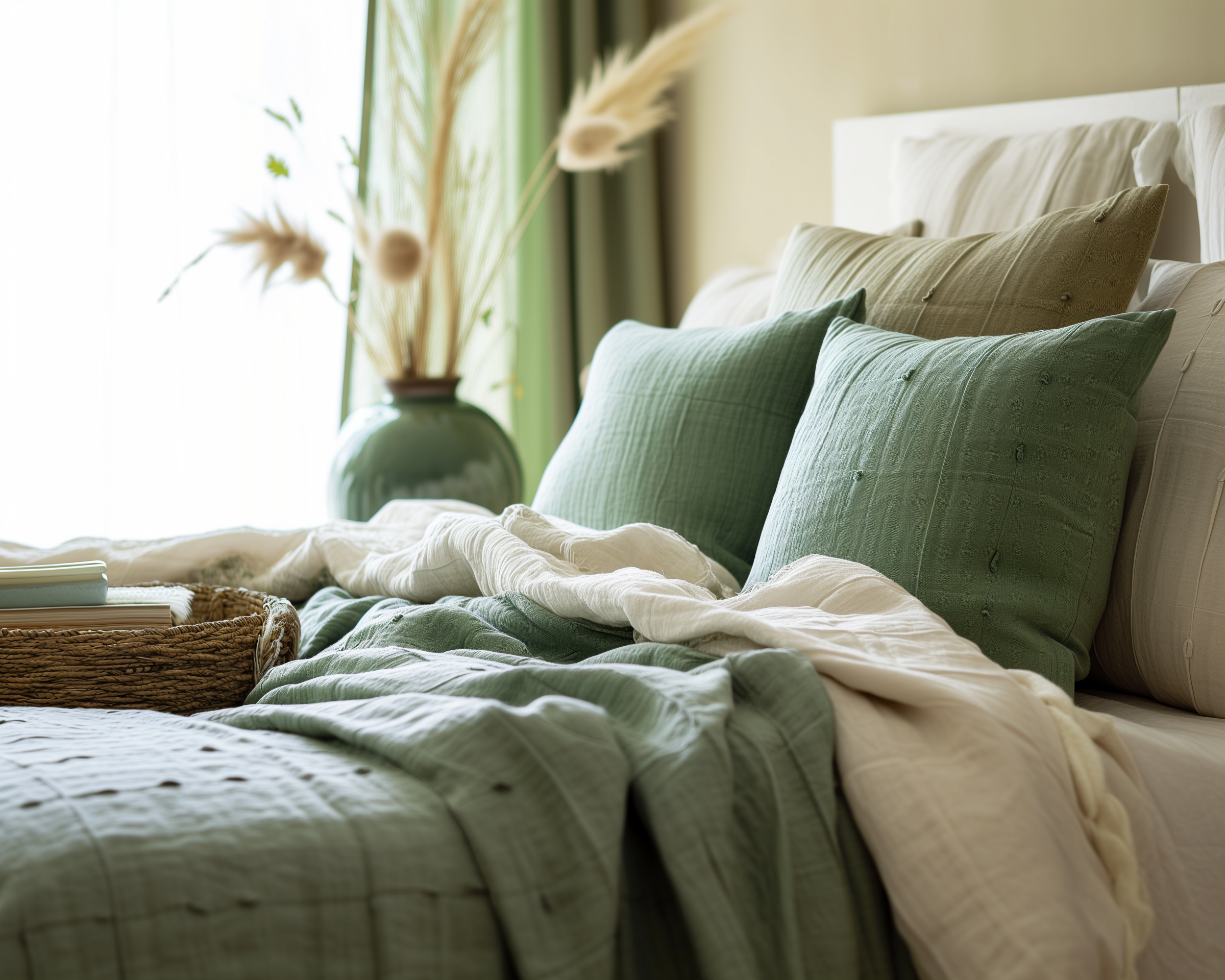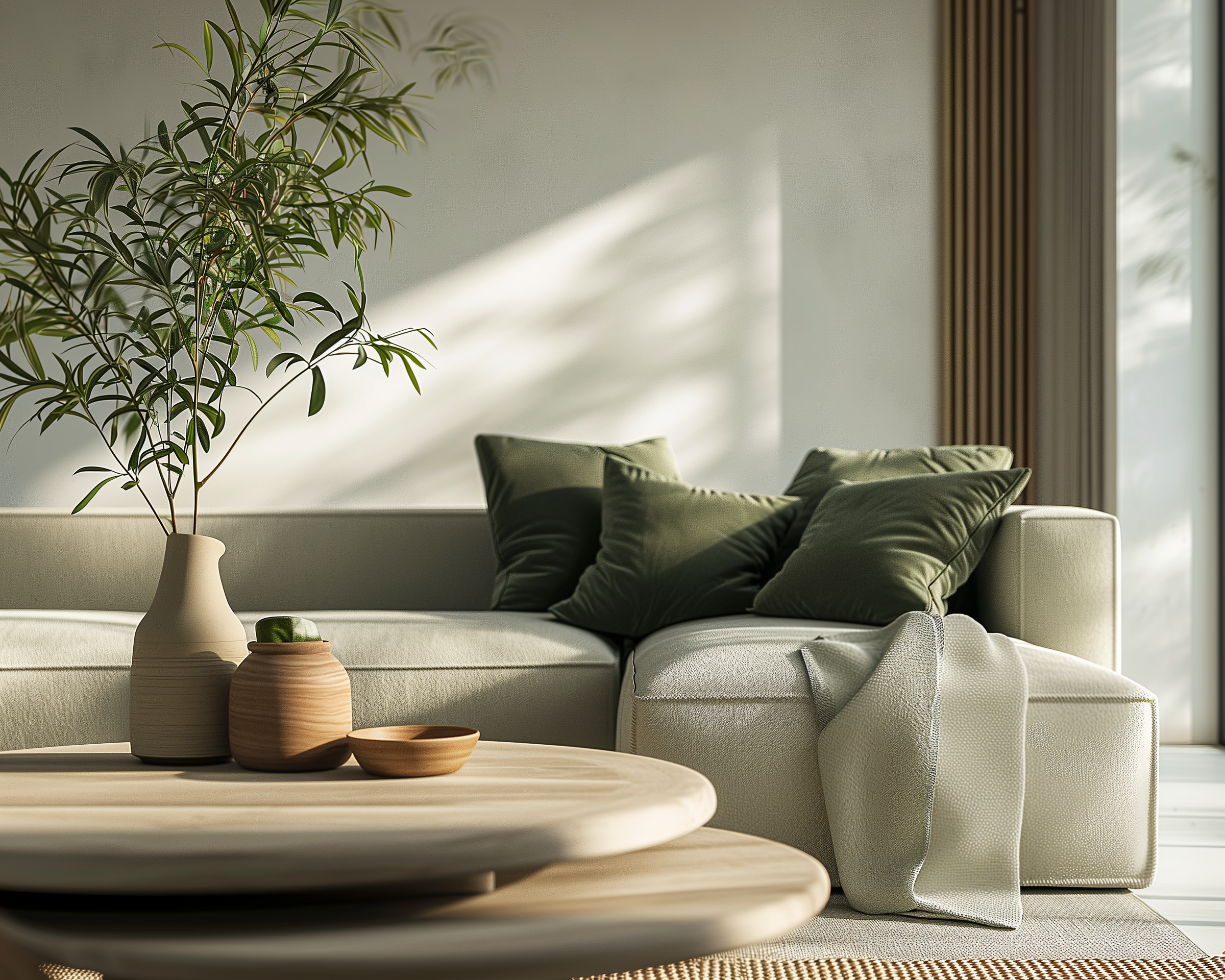In the realm of interior design, color serves as a potent tool for shaping ambiance, evoking emotions, and expressing personal style.
Among the myriad hues available, green stands out as a versatile and captivating choice.
From the lush tones of emerald to the serene shades of sage, the green color palette holds a special place in design, offering a myriad of possibilities to invigorate spaces with vitality and tranquility.

The Green Moodboard: A Palette of Nature’s Finest Hues
A green moodboard is a visual compilation of hues inspired by the natural world.
It typically includes a spectrum of shades ranging from vibrant greens reminiscent of flourishing foliage to muted tones echoing the tranquility of forest glades.
By curating images, fabric swatches, paint samples, and other elements, designers can craft a moodboard that encapsulates the essence of greenery, fostering a connection to the outdoors within interior spaces.
Utilizing Green in Interior Design:
Invoking Serenity: Soft, pale greens such as mint and celadon are renowned for their calming properties. Incorporating these hues into bedrooms and living areas can promote relaxation and tranquility, creating serene sanctuaries for rest and rejuvenation.
Energizing Spaces: On the opposite end of the spectrum, vibrant greens like chartreuse and lime inject spaces with energy and vitality. These lively hues are ideal for accentuating areas where activity and creativity abound, such as home offices, studios, or communal spaces.
Connecting with Nature: Green, being the color most associated with nature, fosters a sense of connection to the outdoors. By incorporating elements such as indoor plants, botanical prints, or natural materials like wood and stone, designers can enhance this connection, infusing interiors with a refreshing and rejuvenating ambiance.
Symbolism and Color Psychology of Green:
Harmony and Balance: Green symbolizes harmony and balance, representing the equilibrium found in nature. It evokes feelings of stability, growth, and renewal, making it an ideal choice for creating harmonious living environments.
Renewal and Growth: As the color of springtime foliage, green is intrinsically linked to themes of renewal and growth. It signifies new beginnings, fresh perspectives, and the promise of vitality, making it a powerful symbol of rejuvenation within interior spaces.
Health and Well-being: Green is often associated with health and well-being, thanks to its connection to the natural world. Studies have shown that exposure to greenery can have a positive impact on mental and physical health, making it a popular choice for healthcare facilities, wellness retreats, and residential spaces alike.
In conclusion, the green color palette offers a rich tapestry of hues that can transform interior spaces into havens of tranquility, vitality, and connection to nature. Whether used to evoke serenity, energize spaces, or symbolize renewal, green serves as a versatile tool for designers seeking to infuse their creations with the timeless beauty of the natural world. By embracing the verdant harmony of the green color palette, designers can craft interiors that not only delight the senses but also nurture the soul.
Roy Boustani


